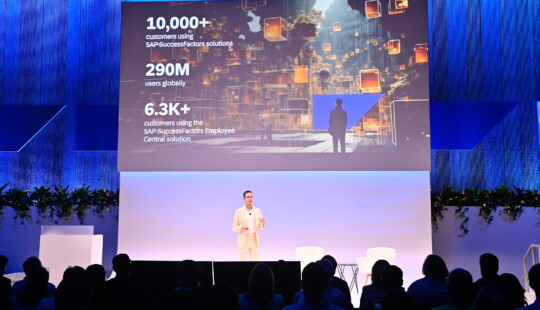The wave of vitriol aimed at people of Pan-Asian heritage in the wake of the global pandemic demands not just workplace attention, but meaningful change.
For some outside perspective, I reached out to several experts, including Dr. Vu H. Pham, chair of Elevate, a partnership with academic institutions, government agencies, and Fortune 500 corporations. He drew a direct line from sustainability to innovation for business profits and a better world.
“The pandemic has ripped off the Band-Aid so that we can actually see the issues and deal with them more directly,” said Dr. Pham. “When you integrate your innovation strategy for competitive advantage with sustainability for the planet and diversity for people, you’ll gain true competitive advantage.”
Being Aware Is Not Enough: Take DEI Action
Among the issues overdue for transformation is the model minority myth positioning every Asian as a triumphant high achiever against all odds. In fact, women of Pan-Asian heritage face unique obstacles moving from entry-level positions into management. Coupled with politically fueled misinformation that has driven pandemic-related hate and violence against Pan-Asians, the workplace impact can be profound.
“The way someone is treated at work impacts how they view themselves,” said Richa Bansal, co-founder and CEO of Pinkcareers. “Confronted with snap judgments, people may decide not to speak, or talk only within their peer groups. Companies can provide safety in the workplace by teaching employees that it’s okay to be supportive and here’s what you can do. Ask people how you can help and let them decide to include you in conversations and activities.”
Inclusive Company Values Benefit All
Results from Elevate’s recent Asian360 study revealed gaps between workplace perceptions and realities. About 500 people in U.S. workplaces, both Asian Pacific Americans and non-Asian Americans, rated their perceptions about people across dozens of dimensions. While almost 50% of Asian American respondents said they were generally perceived as more humble in the workplace, only 32.9% of surveyed people from other ethnic groups held that perception. Close to 45% of the Asian Pacific American respondents said they were generally perceived to be less assertive in the workplace compared to other major ethnic groups in the U.S. However, just 32% of people from other ethnic groups perceived Asian Pacific Americans as even slightly less assertive.
While these perception gaps are likely related to cultural context and norms, Dr. Pham suggested reshaping corporate values to play to the strengths of historically marginalized people.
“Asians in the workplace are not a problem to be fixed,” he said. “Our conversations and actions need to take into account cultural, social, and economic dimensions that can contribute to transforming the workplace. Asians tend to be more collectivist. People can use their collective influence to help promote the voices of the underrepresented while also building cross-functional collaboration that closes organizational silos. Linking those results to diversity metrics is a win for the company too.”
Similarly, Bansal said that people of Pan-Asian heritage often have a more indirect approach, again reflecting cultural differences. They are assertive and confident on the inside, but may be erroneously viewed as lacking the people skills to lead and manage.
“A soft skills gap is perceived as a talent gap, when it’s something that could be developed with mentoring,” said Bansal. “Multiple companies and associations are forming communities where people come together to bring collective concerns to the attention of management and entire industries.”
Employee Communities Promote Inclusion
One example is the Pan-Asians@SAP Employee Networking Group. Nethra Murali, who is a pricing and commercialization manager at SAP Concur, co-founded the group in May 2020. Employee attendance has been high at virtual events on topics such as the art of managing up, breaking through the glass ceiling, hate awareness, and networking to share experiences.
“In hindsight, our timing was perfect, as hate crimes against people of Pan-Asian heritage snowballed,” said Murali, who is also global president of the group. “We’ve helped educate employees about challenges they may face. In addition to practical advice, people have found comfort and support in being part of a community that cares.”
This Employee Networking Group at SAP represents people of all Asian ethnicities and cultures. As part of its mission, members helped spread the word about SAP’s €6 million COVID-19 Emergency Fund that donated support to India. During the height of the pandemic in South Asia, employees worldwide were encouraged to check in with colleagues and family in that region.
Helping Women Reach Management
The consensus is that managers can and should help people of Pan-Asian heritage, particularly women, overcome their unique challenges in getting ahead.
“On top of gender-based role expectations in Asia, women have to navigate cultural and ethnic stereotyping,” said Eeksha Kohli, co-founder and program director at Pinkcareers. “For instance, Pan-Asians are often expected to be good at math. Consequently, they can be confined to technical roles. Don’t assume someone wants to remain a technologist. Managers need to ask someone about their managerial aspirations, even if that person hasn’t volunteered it.”
I’ve always disagreed with the adage that your job doesn’t define who you are. In fact, there’s no way that the place where we spend about one-third of our time couldn’t shape our identity – professionally and, to a large degree, personally. Companies have a pivotal role in actively promoting and supporting diversity, equity, and inclusion not just because it’s good for business, but because it has a profound impact on people’s lives.
Follow me @smgaler.
This blog also appeared on SAP BrandVoice on Forbes.



